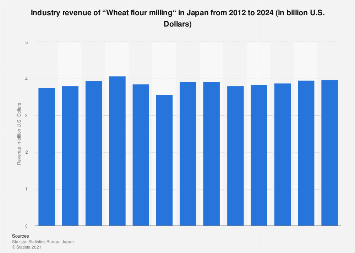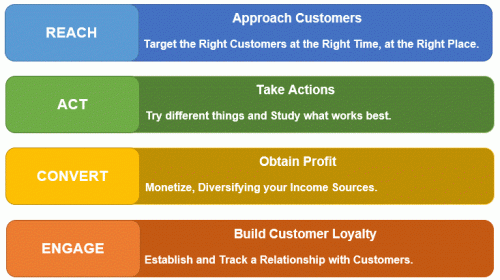Corporate Strategy Assignment Sample
Introduction
Nippn Flour Mills Co. Ltd. is a well-developed flour mills and other food processing corporation, based in Japan (Teixeira and Junior, 2019). The present report aims at highlighting different concepts of corporate strategy and planning. It includes the assessment of competitive advantage of on established flour Mills Corporation, based in Japan, the Nippn Flour Mills Co. Ltd. The report applies the RACES model for assessing the three factors relevant to the corporate strategy. Conclusively, the report highlights a justification for the preferred strategic direction and ensures that the proposal is vital and robust.
Competitive assessment
After assessing and analysing the strategy and business model of NFM Corporation, the key factors contributing to the firm’s competitive advantages are identified below. Other than this, the pertinent challenges or the issues to the company in the light of the success factors or the strengths are also explained below.
Strengths/Success Factors:
Research and Development: Nippon Corporation uses basic research techniques into cereal flour and grains for undertaking studies associated with the attributes of secondary processed products (Kabeyi, 2019). This is initiated in order to develop and provide the optimal products. Moreover, excellent research and development strategies support the firm in ensuring accurate testing and the best standards of safety, food hygiene, quality control, nutrient analysis, ingredients, and use-by-dates. Furthermore, the company uses bio-technology for developing new businesses which significantly contribute in extending the healthy life spans of people. It contributes in building strong competitive edges for the firm, thereby, offering cut-throat competition to the other rival brands.

Figure 1 The Japanese Wheat Flouring market revenue (2012-2024)
Different brands to cater different customer segments: Extensive and diversified product offerings of the NFM company have been major contributors in developing excellent competitive advantages for the company. It also supported the firm to penetrate into different customer segments within the food processing industry (Gokhberg et. al. 2019). Also, it supports the organisation to undertake diversification of its revenue streams.
Wide geographic presence: NFM corporation is known to have extensive and widespread dealer network as well as associates’ network which supports in ensuring the delivery of efficient services to the worldwide customers. Not only this, it also helps in the management of competitive challenges within the crowded food processing industry in Japan and over the global platform.
Diversified product range: Nip in flour Mills offers different product ranges to words worldwide customers. These include, wheat flour, wheat bran, poor transportation, warehousing, healthcare, biotechnology, pet care, machinery sales, and others. Other than this, the other food products include frozen ingredients, frozen foods, dried noodles, corn products, rice flour, pasta, ready-made meals, and others (Sax and Andersen, 2019). Diversified product portfolio is one of the major contributors of building strong competitive edges and success factors for Nippn Corporation.
Weaknesses or pertinent issues:
High employee turnover: after assessing and analysing the overall position of the company, it has been observed that employee turnover is the major issue faced by NFM company. The lower-level employees highlight high turnover rate, which is a major issue or challenge. Also, it may result in higher salaries or wages to the employees in order to maintain the competitiveness and talent within the organisation.
Local monopolies and niche market: The company is able to exploit as well as fast disappearing (Biodun et. al. 2019). Moreover, the customer network built and promoted by NFM Corp is proving to be less effective and growth oriented.
Low investment in customer services: NFM Company has been observed to lack adequate investment level associated with offering effective and excellent customer services to its consumers. This is a major weakness of the company, as it may result in the other rival brands gaining advantage in the near future course. The company urgently needs to increase its investment in customer-oriented services and applications.
Opportunities:
Changing customer preferences: Driving by easy access to information, increasing disposable incomes, and adoption of digital or technological products, the modern consumers are willing to try or experiment new products within the market. Therefore, Nippn flour Mills Corp should carefully monitor or check in the wider trends or aspects in the food processing sector, however, the firm should also consider the wider non-cyclical or consumer sector.
Advanced technologies and innovations: Consistently improving technologies and industrial productivity offers excellent opportunities to the NFM Corporation (Antipov et. al. 2019). It enables the suppliers to produce a vast array of goods and services, thereby, helping organisations to venture into diversified product portfolios.
Local collaboration: Nippn flour Mills Company should tie up with the local established players in different countries. It will enable the firm to gain expertise and experience from the local players, thereby, ensuring global expertise and execution of international strategies towards success and increased profits.
Threats:
Shortage of skilled workforce: The high turnover of employees, as well as increasing reliability on innovative technologies, made result in offering adverse issues related to the procurement and retention of skilled workforce in the near future course.
Changing political factors: The trade war between the US and China, the Brexit, and instability within the Middle East areas may adversely affect the business of NFM company in the local and the international market.
Corporate strategy
Corporate strategy represents a framework or a course of action for an organisation to achieve its set vision, mission, goals, and objectives. It is primarily based on the present position and health of the firm as well as different environmental factors affecting its activities (Haleem et. al. 2019). After analysing all the success factors and pertinent issues to Nippn flour Mills Corp, the three options have been selected for developing its corporate strategy. These three factors include sustain growth, maximum market share, and to develop an exceptional marketing advantage. These aspects have been chosen after assessing the present performance levels, position and health, as well as the requirements of the concerned corporation. Moreover, the above-mentioned weaknesses of the firm have also been considered while choosing the three options of corporate strategy.
The option or the aspect of sustained growth is related to ensuring consistent development and advancement of the NFM corporation in the food processing industry in Japan and over the global platform. It is also concerned with developing product differentiation to vertical and horizontal integration, and strategies for business expansion and profits enhancement (Pradhan and Sharma, 2020). Furthermore, the objective of maximum market share is selected in consideration to the rival brands and intensely competitive industry. It will support the company to establish its overall business value to the consumer’s and develop strong competitive advantages in the industry. It will also help the company to enhance its competitive levels in the industry by adapting to the emerging customer preferences and trends. Lastly, on the aspect of developing a unique marketing edge is associated with the promotional and marketing activities of the NFM Corp. It is associated with strategic techniques and tactics for improving the overall marketing mix of the company in Japan as well as the global platform. It will support the firm to ensure enhanced brand visibility and product availability to the customers.
RACE Model
The RACE model includes four levels or activities which are designed to support organisations to interact and engage their customers across the consumer life-cycle.
Reach: It is related with creating awareness of the brand, its product offerings, and services on different platforms, like websites and off-line media. The NFM Corporation promotes its products over different platforms like social media, its official website, and other offline promotional activities (Grünig and Kühn, 2018). The option in corporate strategy associated with the development of a unique marketing factor plays important role in the reach stage within the RACE model. It will contribute in maximising the reach of the brand’s products in order to create multiple engagements and interactions by using different owned, earned, and paid media touch points.
Act: It is concerned with interactions and communication with the customers on social media platforms and website for generating leads. This stage within the RCA model is a contributor in engaging the target audience by posting content or influencing them by different activities. It also plays a major role in the development of an exceptional promotional strategy, thereby, supporting the NFM Corporation to enhance its product visibility and brand awareness across the global platform.

Figure 2 Stages in the RACE Model
Convert: This stage is associated with the conversion to sales (Guo et. al. 2020). The NFM company must implement techniques to convert eight target audience into its consumers, whether the payment is received through the off-line channels or the online e-commerce transactions. This aspect eventually contributes in ensuring the firm’s overall growth and development in the industry as well as supports and capturing maximum market share.
Engage: The last stage is related to the development of long-term relationships with the customers in order to ensure their loyalty towards the brand and its products. The NFM company must emphasise on using effective communication styles, social media presence, direct interactions, and emails for boosting customer lifetime value. The company should also evaluate the percentage of active customers as well as customer satisfaction levels with its different food products and other offerings (Asadzadeh,2018). Therefore, the overall RACE model can be applied by the NFM Corp as a benchmark for marketing effectiveness as well as the execution of the corporate strategy.
Resultant strategic direction
The corporate strategy for Nippn Flour Mills Corporation is primarily based on the three main aspects or options. These include sustained growth in the industry, capturing maximum market share, and development of an exceptional marketing strategy (Butuner, 2019). All these options or aspects are widely known and considered as the principal sources of value creation for any organisation. In addition to this, these aspects will immensely support the concerned corporation in ensuring its overall development in terms of customer value, profitability, revenue generation, brand image, product diversification, and business expansion. It will also contribute in enhancing the visibility of the brand as well as its product in the home country as well as across the international platform.
Furthermore, it will drive the corporation to gain trust and loyalty from its customers, thereby, continue to grow and enhance its strengths. Additionally, it will support the company to make efforts on a frequent basis in order to keep every customer satisfied, buy the product offerings, in each and every business area, competitive products and services of the best quality, hence, contributing to the welfare of the society (Cavallo et. al. 2019). Hence, the three aspects within the development of corporate strategy will ensure that the company leads in the high value-added market and ensures and sustainable growth in the food processing industry, based in Japan and across the global platform.
Justification
A corporation that is growing and estimate to sustain that growth and development demand strategies and techniques to guide its proper development, build a strong financial foundation, and prepare for the potential challenges which lie ahead. It implies or represents the need of a strategic plan or a corporate strategy (Landrum, 2018). Therefore, it can be observed that a corporate strategy can be referred to as the vision of a corporation’s future and the necessary steps to accomplish the future. An excellent corporative strategy includes the objectives and goals, metrics for the evaluation of progress, budgets, timelines, and desired outcomes. The concerned corporation, Nippn Flour Mills Corporation is well developed and established in the Japanese food processing industry. The corporation is driven by its objectives associated with it sustained growth, development, and customer satisfaction through its diversified product portfolio. Furthermore, the corporation emphasises on contributing in the overall welfare and improvement of the society. All these purposes or objectives demand an excellent and effective corporate strategy or plan.
Therefore, it can be observed that a corporate strategy holds utmost significance for an organisation striving for overall success and development in the industry. It provides a representation of the action plan or the steps which are necessary for the accomplishment of site mission, vision, and objectives (Ioannou and Serafeim, 2019). The above report plays a significant role in identifying the major factors which contribute in building competitive advantages for the NFM Corporation. These factors have been observed to be the strengths of the company, thereby, ensuring its dominating position in the food processing industry. Excellent research and development, wider market share and presence, diversified product portfolio, and strong brand name some of the strengths or success factors of the NFM company. Other than this, the pertinent issues or the challenges have also been recognised above. These aspects are factors play a crucial role in the identification of the strategies or techniques which are important for driving the form towards international success and prosperity. Not only this, the strengths, weaknesses, opportunities, and threats also act as the basic foundation of developing a corporate strategy or a strategic framework for the NFM company. It contributes in discovering and assessing the emerging opportunities for the company in the external corporate environment, however, it also sports the potential threat to the organisation (Camilleri, 2017). Therefore, the above undertakings SWOT analysis is robust and helpful for the company to plan eight future strategies and make important decisions.
Furthermore, the above proposal also highlighted the three most important options or aspects relevant for the corporate strategy of the NFM company. These aspects have been related with sustained growth in the industry, maximum market share, as well as the development of an exceptional marketing strategy. These three options are widely considered and observed to be the drivers of an organisation towards increased visibility, growth, development, and prosperity in the industry. Later, the three options have been assessed by the application of the RACES model (Miska et. al. 2018). It significantly contributed in explaining the four key steps required for engaging and interacting with the target audience of the NFM company. It will immensely support the corporation to communicate its objectives, strategies, and values with its customers, another key stakeholder. Also, it will help the company to enhance its overall visibility across the global platform, thereby, influencing and attracting the customers to words its products.
Other than this, the RACES model will help the company to develop a marketing plan as well as manage its overall business activities in a structured and organised manner. Also, it will encourage the implementation of a data driven approach towards marketing and promotion of the food products and services offered by the NFM company in Japan and other nations. Not only this, it will also support in defining the key performance indicators which should be included by the digital promoters and marketers at different stages for defining targets, reviewing results using summary dashboard, analytics, and continuous optimisation (Campbell et. al. 2020). Hence, it can be analysed and observe that the above proposal of corporate strategy and the application of the RACES model are robbers and vital for the concerned corporation, Nippn flour Mills Co Ltd. All these factors will eventually support and help the company to ensure its sustained growth and development in the food processing industry, based in Japan as well as the global platform.
Conclusion
The above report concludes that a corporate strategy and planning holds utmost significance for any organisation. It included the application of the suit model of the Nippn Flour Mills company. Later it included the RACES model as well as a justification for ensuring that the proposal is appropriate.
References
Antipov, V.Y., Kurokhtina, O.Y., Maksutkan, S.M. and Anyushenkova, O.N., (2019). Some essential features of strategic planning. Наука и образование: новое время, (1), pp.178-183.
Biodun, V., Singhry, H.B., Ambursa, M.N., Christian, A., Akinwale, S.G., Anaele, I.O., Jeremiah, O.U., Victoria, G., Umar, B.A., Muz’au, U. and Alex, A.J., (2019). Strategic Planning as a Tool for Enhancing Corporate Performance.
Butuner, H., (2019). Case studies in strategic planning. Auerbach Publications.
Camilleri, M.A., (2017). Corporate sustainability and responsibility: creating value for business, society and the environment. Asian Journal of Sustainability and Social Responsibility, 2(1), pp.59-74.
Campbell, G.M., Webb, C., Owens, G.W. and Scanlon, M.G., (2020). Milling and flour quality. In Breadmaking (pp. 187-219). Woodhead Publishing.
Cavallo, A., Ghezzi, A., Sanasi, S. and Rangone, A., (2019, September). The strategic-value network model for entrepreneurial ecosystem assessment. In European Conference on Innovation and Entrepreneurship (pp. 214-XXV). Academic Conferences International Limited.
Deora, N.S., (2018). Whole wheat flour stability: An insight. Acta scientific nutritional health, 2(3), pp.8-18.
Gokhberg, L., Kuzminov, I., Bakhtin, P., Timofeev, A. and Khabirova, E., (2019). Emerging technologies identification in foresight and strategic planning: case of agriculture and food sector. In Emerging Technologies for Economic Development (pp. 205-223). Springer, Cham.
Grünig, R. and Kühn, R., (2018). Strategic Planning. The International Encyclopedia of Strategic Communication, pp.1-11.
Guo, J., Zhou, B., Zhang, H., Hu, C. and Song, M., (2020). Does strategic planning help firms translate slack resources into better performance?. Journal of Management & Organization, 26(4), pp.395-407.
Haleem, F., Jehangir, M. and Ullah, Z., (2019). Strategic planning and SMEs performance: A developing country’s perspective. Journal of Business & Economics, 11(2), pp.33-49.
Ioannou, I. and Serafeim, G., (2019). Corporate sustainability: A strategy?. Harvard Business School Accounting & Management Unit Working Paper, (19-065).
Kabeyi, M., (2019). Organizational strategic planning, implementation and evaluation with analysis of challenges and benefits. International Journal of Applied Research and Studies, 5(6), pp.27-32.
Landrum, N.E., (2018). Stages of corporate sustainability: Integrating the strong sustainability worldview. Organization & Environment, 31(4), pp.287-313.
Miska, C., Szőcs, I. and Schiffinger, M., (2018). Culture’s effects on corporate sustainability practices: A multi-domain and multi-level view. Journal of World Business, 53(2), pp.263-279.
Pradhan, B.B. and Sharma, M.S.K., (2020). An Overview of Strategic Management: A Key factor to success in Corporate World. Psychology and Education Journal, 57(9), pp.800-805.’
Saini, P., Kumar, N., Kumar, S., Mwaurah, P.W., Panghal, A., Attkan, A.K., Singh, V.K., Garg, M.K. and Singh, V., (2021). Bioactive compounds, nutritional benefits and food applications of colored wheat: A comprehensive review. Critical Reviews in Food Science and Nutrition, 61(19), pp.3197-3210.
Sax, J. and Andersen, T.J., (2019). Making risk management strategic: Integrating enterprise risk management with strategic planning. European Management Review, 16(3), pp.719-740.
Teixeira, G.F.G. and Junior, O.C., (2019). How to make strategic planning for corporate sustainability?. Journal of Cleaner Production, 230, pp.1421-1431.
Online:
Statista Research Department, 2021. The Japanese Wheat Flouring market revenue (2012-2024). [Online:]. Accessed through:< https://www.statista.com/forecasts/414029/wheat-flour-milling-revenue-in-japan >
RACE Planning, 2021. [Online:]. Accessed through:< https://www.consuunt.com/race-planning/ >
………………………………………………………………………………………………………………………..
Know more about UniqueSubmission’s other writing services:

